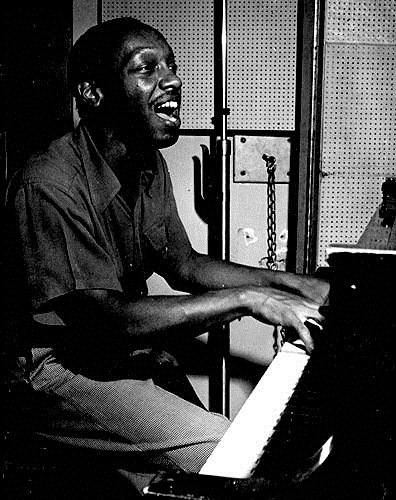Tadley Ewing Peake Dameron, pianist, composer, and arranger, was born in Cleveland, Ohio on February 21, 1917. He died on March 8, 1965, at the age 48. Dameron was surrounded by music his whole life. His mother taught him how to play the piano by referring to records of Fletcher Henderson and Duke Ellington. Andy Anderson, a Cleveland jazz musician, said that Dameron was first encountered in 1930s Cleveland when Caesar brought his brother Caesar to a nightclub and asked him if he could join the Snake White Band. Anderson stated that he was amazed at Tadd’s ability to play the piano. Anderson stated, “He has ten fingers and all of his fingers went down on the keys. All of them were playing different notes.” It was something you didn’t expect. Soon, Freddie Webster, a friend from Central High School, convinced Dameron that he would join his band in Cleveland. At 21 years old, Dameron began writing arrangements for the band Hayes Pillars and James Jeter had formed in Cleveland. Dameron travelled to New York in 1940 with Zack Whyte’s and Blanche Calloway’s bands. After Musso’s band disbanded, Dameron moved to Kansas City and composed and orchestrated Harlan Leonard’s Rockets. His compositions for Leonard included “400 Swing”, “Rock and Ride” and “A La Bridges”. At this time in Dameron’s life, he was almost writing pure swing. He did not yet have the evidence of the new sounds that he would create. While composing arrangements for the Jimmie Lunceford Orchestra, he began to explore new ideas. He was enjoying all the new bebop and began to incorporate some of it into his big band arrangements. Dameron recalled that he started writing in his own style after he joined Count Basie’s band. In 1942, Trummy Young (a trombonist Dameron knew from the Lunceford band), introduced Tadd to Dizzy Gilespie. Dameron was a composer of arrangements for Dizzy Gillespie’s big band in the late 1940s. He gave the Carnegie Hall premiere of Soulphony, his large-scale orchestral work, at Carnegie Hall, 1948. In 1948 Dameron also led his own New York group, which included Fats Navarro; the next year, he was at Paris Jazz Fair with Miles Davis. Dameron was the arranger for Gillespie’s large band. He used long phrases, strong upbeat rhythms, and chord changes of Bop, which Charlie Parker and Dizzy pioneered, in big band arrangements. Dameron composed “Good Bait” for Gillespie in his early days. In 1947, Esquire magazine named Dameron “The Best New Jazz Arranger.” The same year, Dameron formed his own small band with Fats Navarro (a talented young trumpet player). They recorded many classic Blue Note and Capitol sides. Dameron would find another young trumpeter after Navarro, who died in 1950 at 26. Dameron was getting ready for a recording session when he remembered that he had hired Clifford Brown, a relative unknown. They entered the New York City recording studio on June 11, 1953. Clifford Brown’s trumpet rose brilliantly above the nine-piece ensemble of chanters. Clifford Brown was a well-respected trumpeter in jazz by 1956, just three years after Dameron first recorded him. Dameron continued to arrange and write, including the most well-known composition, “If You Can See Me Now”, which was recorded by Sarah Vaughan, Dameron’s boyhood friend, and Freddie Webster. He spent most of 1959 to 1961 in Federal Prison, Lexington KY on narcotics charges. Dameron was freed and wrote songs for Blue Mitchell, Milt Jack, and Benny Goodman. Tadd Dameron’s final session recording was “The Magic Touch of Tadd Dameron” (1962), a set that captures much of his career. This record features all originals such as “On a Misty Night”, “Fontainebleau”, “If You Could See Me Now”, and “Our Delight.” It was recorded with a large band that included Bill Evans on piano, Johnny Griffin on tenor sax, Charlie Shavers and Joe Wilder on trumpets, Clark Terry on trumpets, trombonist Jimmy Cleveland, Julius Watkins on French horn, and Philly Joe Jones on drums. Barbara Winfield sang on two of the songs. This is a fitting farewell to the be-bops’ greatest arranger, whose life was too short. Dameron was a victim of cancer, and suffered several heart attacks before his death in 1965 at 48.
